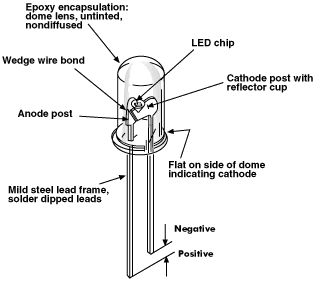Okay fellas, I just got done uploading some schematics that I spent a good deal of time drawing up this weekend. I know I hoped to get them uploaded last weekend, but I just ran out of time. My apologies.
First of all, a link to my favorite online calculator, for figuring out the proper resistance value required for your LEDs.
http://led.linear1.org/led.wiz
When you punch in your LED's specs, look to the packaging or information card to get the voltages and current draws correct. If none are available, check online, from the dealer you purchased the LEDs from. Often times they have data sheets that give you everything you need.
Let's start by doing a simple LED circuit for a model.

Now I often use terminal blocks when I need to take a voltage source and split it up into multiple circuits. They are quite handy and help keep wiring clean. You do not have to use them at all, if you don't want. It's just a nice option to have. Never know when you might want to add a circuit, might need to make some repairs, or expand the electrical system of your truck. It's also handy for maintenace, should you need to remove the body. You can also use micro plugs so the LEDs stay with the body or cab of the truck, when you remove it. It helps to keep things tidy.
This basic circuit above is one that you can build completely from scratch, as a stand alone system. There are options out there for turning the LEDs on and off. Toggle switches are cheap and effective. Hands free operation can be done with battle switches, which plug into your radio receiver. My choice are the battle switches from these guys. Other places offer their own switches too.
http://www.dimensionengineering.com/BattleSwitch.htm
One thing to know about LEDs is that they are polarity sensitive. If you hook them up backwards, they will not light up. You will not damage them in doing so, unless the voltage is to high, but if you manage to mix up the polarity of one, while wiring it, any other LEDs wired in series with it will not light either. So if in doubt, check that your LED polarity is correct. There are testers you can buy to do this, or you can make your own tester using a couple batteries. It's also good to test the LEDs you are going to use, to be sure they work. I've never run across a dud myself, but no one likes to be forced to do rework. I'd hate to tear apart a circuit to replace a bad one.

The easiest way to identify the polarity of an LED is by looking at the leads. The longest one is always going to be your positive lead. If the leads are trimmed the same length, there are other things to look for. Inside the lense, the portion of the LED that has a little 'flag' is going to be your negitive - the cathode.